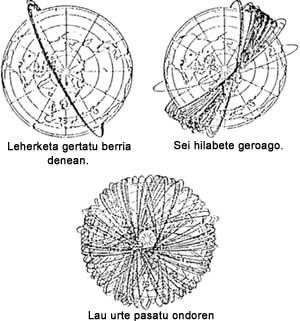Formerly garbage... and now space advertising (I)

Astronomers and other space professionals will face a relatively serious problem in the coming years. Space garbage and light pollution, or in general electromagnetic pollution, can lose in a few years many research work if no action is taken.
The problem of garbage that rotates in orbits around the Earth is often mentioned. When organizing space programs, it is necessary to take into account the problems that generate these garbage and, ultimately, its danger to astronauts and tooling. The most serious consequences are not the only ones that produce all the scrap that revolves around the Earth. The light left by satellites and their remains destroy a third of the photographs taken from Earth to the deep sky.
Of course, existing observational instruments on Earth also find other sources of light pollution much more harmful, but perhaps no one expected one of them to be created by advertising. However, a US company has studied in depth the possibility of putting into orbit a bulletin board. However, the details of this intention, the reaction of astronomers and, usually, the incidents of light pollution, we will leave them for the next issue, in this case we will deal with the garbage.
The first point to clarify is the origin of this garbage. It is still only 36 years that the study of space began using artificial satellites. Therefore, the number of spaces that have been put into orbit in this period does not seem to be enough to cause problems. However, the risk is due to the explosion and destruction of many spaces. In addition to satellites that have been accidentally or accidentally destroyed, they are those that have exploded for security reasons and for military purposes, such as the program of the so-called “Star War”. Given that it is the closest orbit to Earth (up to 5,500 km), as an example it can be said that the biggest explosion that has occurred so far is the one suffered in 1986 by a pitcher Ariane. Consequently, 465 fragments of more than 10 cm were generated and it is estimated that some 2,300 do not reach this measure. The fragments generated in an explosion are also dispersed in orbits covering the entire Earth for about four years, forming a kind of snout (see figure).
Today there are more than 10,000 objects of more than 1 cm in movement, the smallest are millions and active satellites are only about 500. Someone might think that we deal with excessively small fragments, but it should be noted that in the orbits to which we refer the velocities of the bodies are around 30,000 km/h. With this speed a half millimeter stretch would cross the astronaut's suit and cause death. On the other hand, a fraction of more than 4 cm can cross from side to side a space station like MIR, forming a large hole that becomes unusable.

There have also been small shocks. In 1983, for example, a paint fits with only 2 tenths of a millimeter hit the Challenger at the front box office, making a 5 mm diameter crater. Of course, before the next flight they had to change the glass. As we said at the beginning, it is evident that the orbit of a space must foresee and quantify the risk to avoid as much as possible. The orbit of the Hubble Space Telescope is 614 km high, near an orbit with high density of garbage 800 km high. Therefore, in the 15 years in which you could live, the probability of hitting trash fragments of 10 cm or more is somewhat higher than 1%. In the NORAD (North American Air Defense Command) prediction works, it keeps track of the larger objects rotating in the lower orbit, reaching the current 8,000.
But care is not enough. The only natural way of cleaning the lower orbits is the weak braking caused by the atmosphere. D. Rex and P. According to studies carried out by Eichler, although in the coming years space activity was completely paralyzed, not half of the scrap through space would disappear. The problem can become very serious if there is no solution. If the amount of garbage is double or triple the current – and according to different studies can occur between 20 and 50 years – the collision between two large satellites could cause a chain of collisions and form a shell of impenetrable garbage around the Earth.
Therefore, some measures have already been taken to reduce explosions in orbits between 200 and 5,500 km and prevent dumping of waste, but the only solution is to start a cleaning plan. Engineers are working, but all their projects have a common feature: they are very expensive. One of the proposed systems, using space ferries, is to place rockets at satellites that do not work so that satellites leave their orbit and fall into the atmosphere. Of course, it would be interesting that satellites that will be launched from now on take them attached.
Another proposal is to put in orbit a disc of 10 km of plastic diameter. The album would not remain pieces of rubbish, but enough braked to fall into the atmosphere. This would mean a minimum of 20 years for cleaning. However, the previous proposal would be lengthened considerably, as it should be noted that there are about 700 satellites that do not work in accessible orbits.
September Anniversaries SUN: beginning of autumn, September 23, 0 h 22 min (UT).
PLANETS MERCURY: it appears very low and it will be very |





